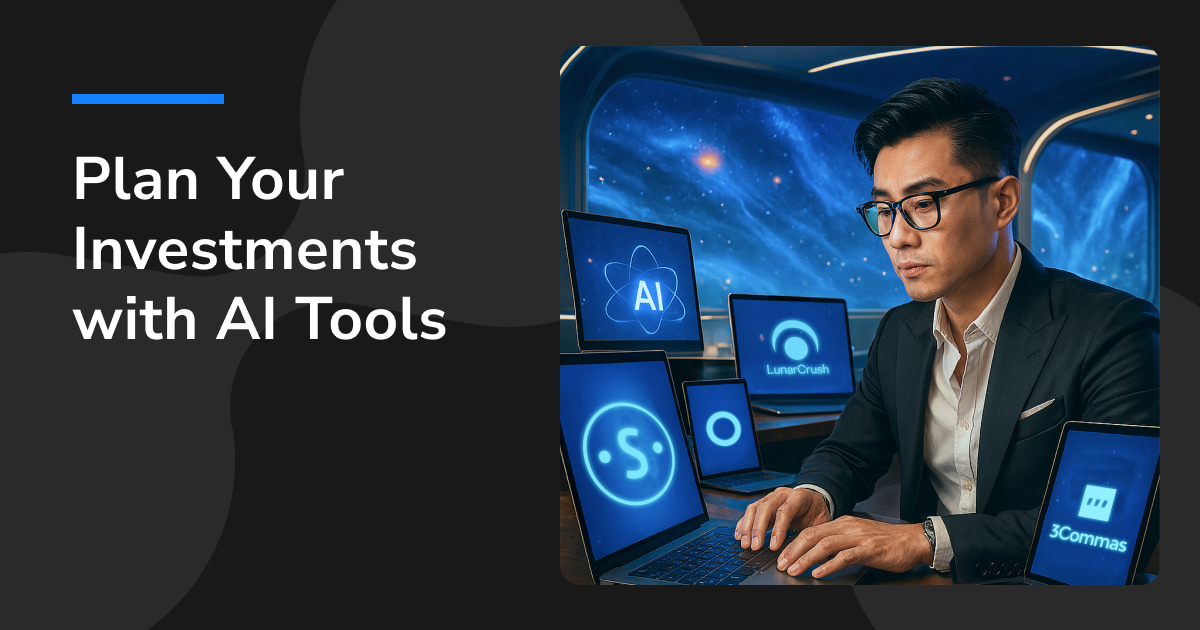How to Use AI Tools to Help You Formulate Investment Strategies

Why Is AI Investing Becoming a Trend?
The financial market is becoming increasingly complex, with an explosive growth in information. This has led investors to seek more efficient tools for analysis and decision-making—enter artificial intelligence. With powerful computing capabilities and machine learning algorithms, AI can process massive amounts of data in real time, helping investors quickly gain insights into market trends. What used to take hours of reading financial reports can now be summarized in seconds, dramatically improving investment efficiency.
According to a study by investment firm Invesco, over half of systematic investors have already integrated AI into their investment processes, and 75% expect AI’s importance to rival or surpass that of traditional analysis within the next decade. This shows that AI-driven investing is expanding from institutions to retail investors, becoming an unstoppable trend.
7 Practical Applications of AI in Investing
1. AI Investment Advisors (Robo-Advisors)
These tools use AI algorithms to automatically recommend and manage portfolios based on a user’s financial goals and risk tolerance. Many Taiwanese banks and brokerages offer robo-advisory services that use questionnaires to assess your risk profile—aggressive or conservative—and then allocate assets accordingly across stocks, bonds, and ETFs. There are also crypto-focused robo-advisors like Merlu that offer real-time insights. Their key advantages: low entry barrier, simplicity, and high personalization—ideal for beginners who lack the time to research the market.
2. AI Investment Assistants & Chatbots
With the rise of conversational AI like ChatGPT, many investment tools now incorporate natural language processing. These assistants act like 24/7 smart analysts and support agents. You can ask in Chinese, “Is now a good time to buy Bitcoin?” or “What’s the outlook for Ethereum?” and receive synthesized insights based on real-time news and data—often with source links.
3. AI for Smart Coin Picking and Data Analytics
Blockchain project filtering and data analysis are major AI use cases. Platforms like Santiment analyze millions of posts per day across blockchain data and social media to forecast market cycles. LunarCrush monitors platforms like Twitter, Reddit, and YouTube, scoring over 2,000 cryptocurrencies on social sentiment. These tools help identify trending tokens and fund flows—such as whale wallet movements or spikes in social activity—filtering investment opportunities from the noise.
4. AI Technical Analysis and Strategy Automation
AI trading platforms can identify chart patterns, calculate indicators, and even generate trading strategies. For example, 3Commas offers AI-assisted grid and DCA bots, which optimize buy timing and parameters based on RSI or MACD. Cryptohopper includes built-in AI models for sentiment analysis, supporting grid, DCA, and arbitrage bots. Native exchange tools like Gate.io’s bot platform let users set technical indicators, risk parameters (stop-loss/take-profit), and even run backtests and one-click deployments—lowering the barrier for beginners.
5. AI Quantitative Trading Bots
AI bots can monitor the market 24/7, autonomously making and executing trades based on real-time and historical data. Unlike rule-based trading systems, AI bots adapt to changes by processing a wide range of data—price trends, order book depth, volatility, and even social sentiment—to identify opportunities and adjust strategies accordingly.
6. AI for Sentiment and Information Monitoring
Investment isn’t only about numbers—it’s also about timing the pulse of the market. AI tools that analyze news and community sentiment play a key role here. Signum, for instance, monitors over 20,000 financial discussions daily—including about 1,500 articles from CNN, Forbes, Motley Fool, and 20,000+ social media posts. These are turned into quantified “sentiment scores” (ranging from -3 to +3), helping investors gauge the current emotional tone of the market.
7. AI for Risk Management and Anomaly Detection
Investment is not just about maximizing returns—it’s about managing risk. AI-powered advisors often come with built-in rebalancing and risk alerts. When markets shift and your portfolio drifts from its original allocation, AI can send notifications prompting you to realign positions. AI can also detect abnormal events—such as sudden spikes in volume or unusual price movements in a crypto asset—flagging potential manipulation or crashes early. Some apps will push real-time alerts or SMS notifications to help investors act swiftly.
The Pros and Cons of AI in Crypto Markets
Advantages
• Real-time data analysis: Crypto markets run 24/7. AI’s speed and scale allow real-time insights, helping investors seize early opportunities.
• Automated execution: With machine learning, AI trading systems can place orders based on pre-set conditions or adjust dynamically, especially during night sessions or sudden downturns.
• Multi-source data integration: AI can scan and synthesize exchange data, on-chain metrics, media headlines, and social chatter—making it easier to form holistic views.
• Enhanced risk control: AI bots can enforce rules like max position size or daily loss limits. Some can adjust strategies in real time, e.g., reducing trade frequency during high volatility.
Challenges
• Requires supervision and tuning: AI bots aren’t “set-and-forget.” Investors still need to monitor performance and update strategies as markets evolve.
• Over-reliance on historical data: Most AI models are trained on past data, which may not predict black swan events or policy changes. When facing unfamiliar scenarios, AI decisions may be inaccurate.
• Language and localization barriers: Many leading AI crypto tools (e.g., Freqtrade, Trality) are developed overseas and may lack Chinese documentation, posing challenges for local users.
• Black box problem: Advanced AI models often lack explainability. Investors might not understand why a bot made a certain trade, leading to trust issues—especially after a loss.
• Risk management still crucial: While AI assists with risk control, investors must still set their own tolerance levels and monitor extreme outcomes. AI must be part of a broader investment strategy with stop-loss and review mechanisms.
Conclusion
As AI technology becomes more embedded in financial markets, investors can leverage it to enhance data analysis, execution speed, and risk alerts. But here’s a critical reminder: no matter how powerful AI gets, it cannot replace human judgment, discipline, or emotional resilience.Whether it’s automated trading strategies, real-time monitoring, or anomaly detection systems—these tools are here to support informed decision-making, not to replace it. Risk management remains the most vital part of the investment process—setting stop-losses, diversifying assets, simulating scenarios, and staying mentally prepared.Therefore, investors are encouraged to view AI as one element within a professional investment framework—not a fully autonomous solution. The most successful AI investing strategies are built on collaboration between technology and human insight—ensuring efficiency and performance while maintaining control over risk and volatility.
ZONE Wallet
ZONE Wallet is a blockchain investment gateway designed for Taiwanese users. It combines full regulatory compliance, cutting-edge security, and TWD transaction support, with a mission of making “every crypto transaction safe and secure.” Start building your crypto portfolio with ease—today.Investing in virtual assets carries risks related to price volatility and liquidity. The above content is for reference only and does not constitute any financial advice. Please carefully assess your financial situation before investing and be cautious of potential fraud.




.png)




